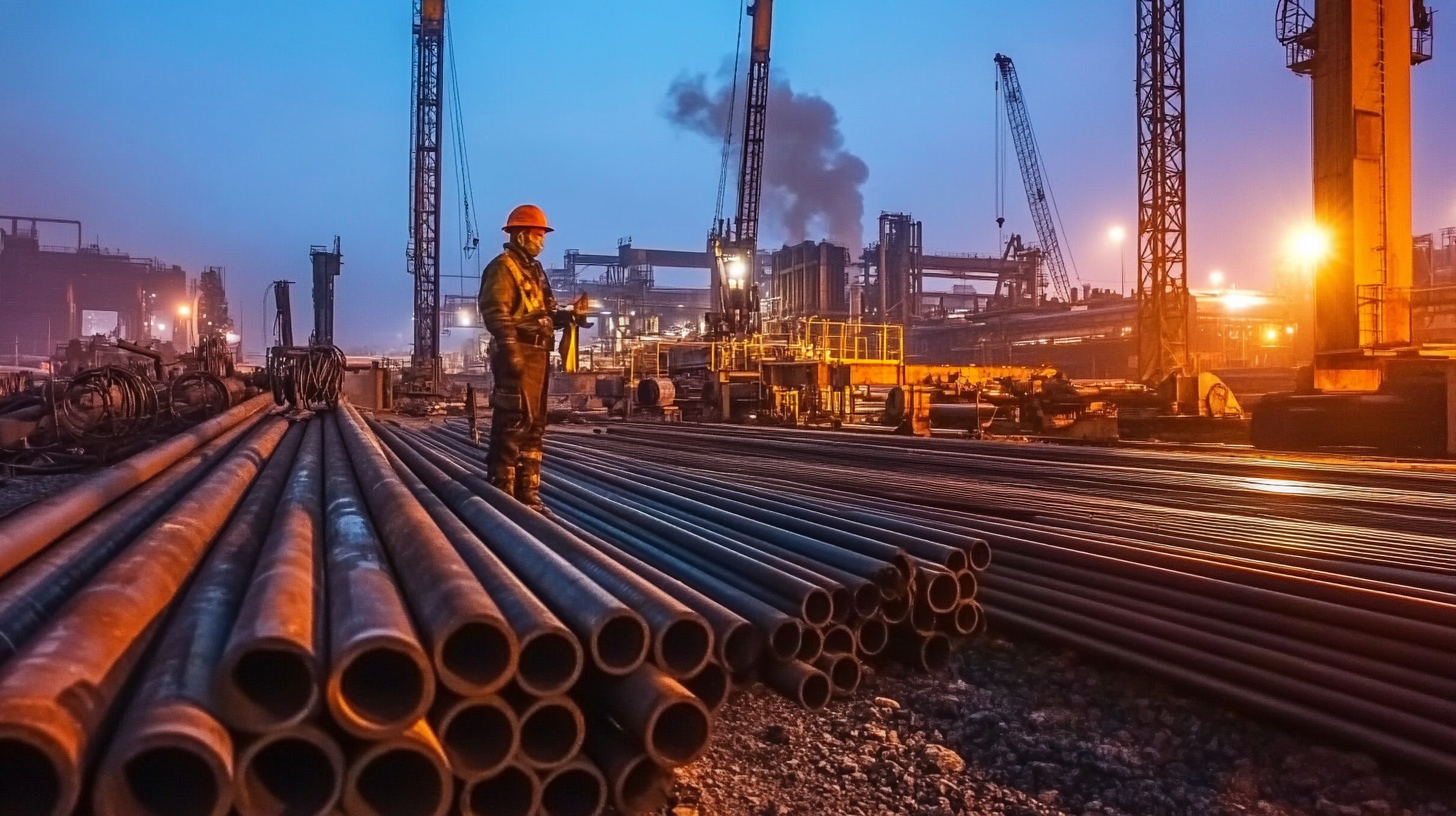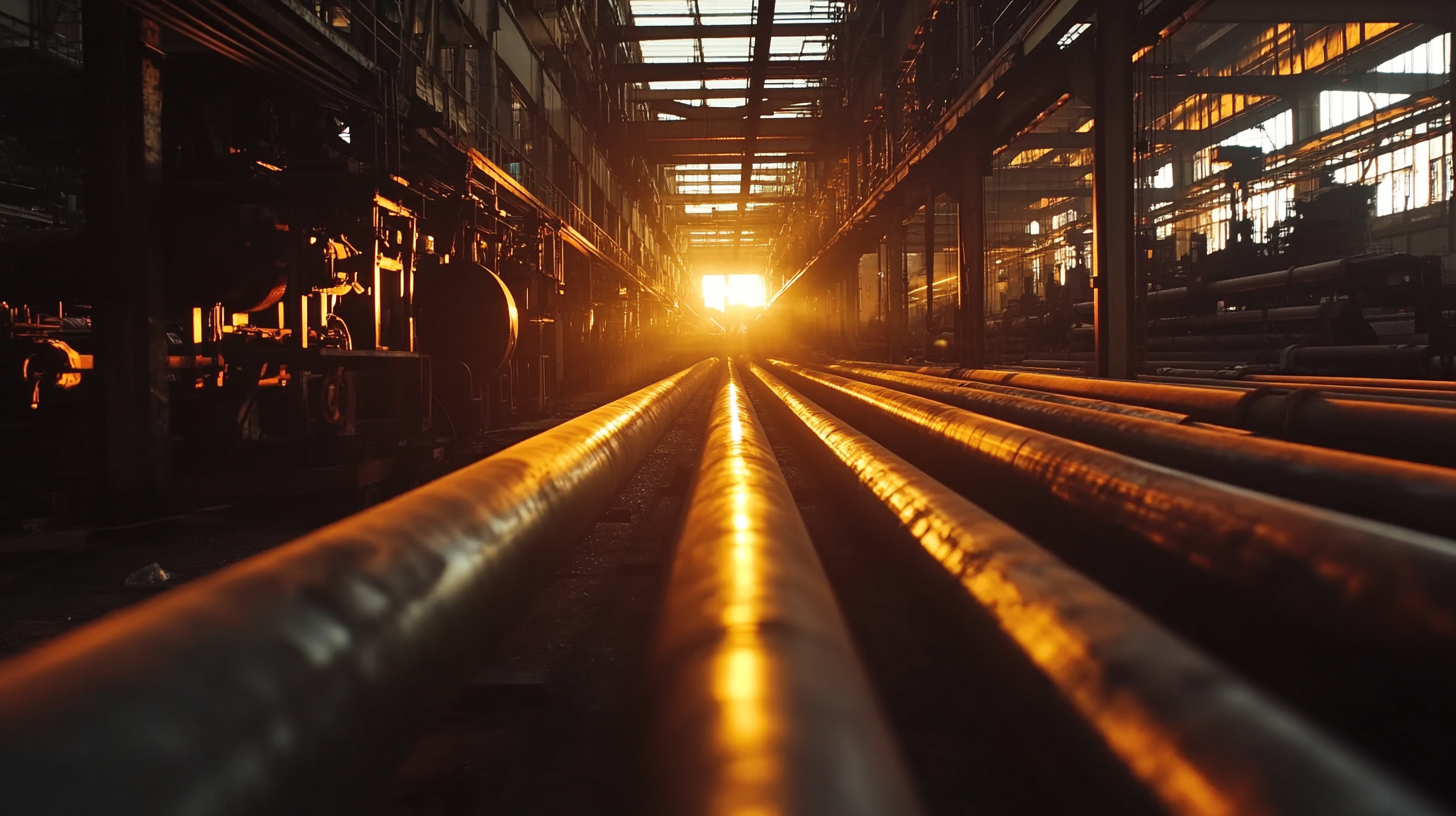
In an era marked by escalating trade tensions and tariffs between the United States and China, the manufacturing sector has been forced to adapt and innovate to maintain competitive advantages. Amidst these challenges, China has emerged as a leader in the production of Carbon Steel Pipe Making Machines, showcasing remarkable resilience and growth. This surge not only highlights China's manufacturing prowess but also reflects a strategic push to capitalize on domestic and international demands for robust infrastructure solutions. As the global economy faces uncertainties, the advancements in Carbon Steel Pipe Making Machines position China favorably within the industry, allowing it to outpace competitors while navigating complex trade restrictions. This blog will explore the factors contributing to this remarkable growth and the implications for the global steel market in the wake of US-China tariff challenges.

China has demonstrated remarkable resilience in the carbon steel pipe manufacturing sector, even amidst heightened tariff challenges from the United States. Despite a slight 1.7% decline in steel output last year, Chinese manufacturers are adapting to the evolving landscape. The recent tariffs aimed at curbing China's dominance in strategic sectors may impose short-term hurdles, but they could also present an opportunity for innovation and efficiency within China's extensive industrial framework. In fact, the steel sector is strategically focusing on restructuring supply chains to be more resilient, ensuring consistent production and delivery of carbon steel pipes.
Tips: To thrive in an evolving market, businesses should prioritize diversifying their supply chains and investing in advanced manufacturing technologies. Additionally, staying informed about international trade policies can help companies anticipate shifts in market dynamics. Engaging in collaborations with Australian suppliers can also reinforce positions in key commodity shipping, providing an edge in navigating tariff-related disruptions.
Moreover, as the U.S. seeks to maintain its industrial stature through innovation, Chinese companies are anticipated to remain at the forefront of energy technology production. This trajectory may reinforce China's competitive advantage in manufacturing, pushing companies to develop more sustainable and efficient practices that align with global energy goals. Emphasizing innovation within carbon steel pipe production will not only boost resilience but also enable manufacturers to stay ahead in a competitive global market.

The recent escalation of US-China tariffs has significantly reshaped the global steel pipe market dynamics. According to a report by Market Research Future, the global steel pipe market is projected to grow at a CAGR of 6.5% from 2021 to 2027, driven largely by infrastructure development and energy sector investments. However, the trade tensions have caused a ripple effect, leading to increased costs for manufacturers and disruptions in supply chains. US tariffs on Chinese imports have not only heightened the cost of raw materials but also prompted domestic companies to seek alternative suppliers, impacting the overall market reliability.
China, leveraging its advanced manufacturing capabilities, has surged ahead in producing carbon steel pipe making machines, adapting to the evolving landscape of the industry. The China Iron and Steel Association reported that China's steel pipe output reached 20 million tons in 2022, despite the tariff challenges, as manufacturers innovate to remain competitive. This growth is juxtaposed against the backdrop of rising tariffs, which have led to a decline in imports of steel pipes into the US by approximately 15% in the first half of 2023. As manufacturers adjust to these tariff-driven changes, the sector is witnessing a fundamental shift that could redefine supply chain strategies and competitive dynamics in the years to come.
| Country | Tariff Rate (%) | Main Exported Steel Pipe Type | Annual Export Volume (tons) | Market Impact (%) |
|---|---|---|---|---|
| China | 7.5 | Seamless Steel Pipes | 5,000,000 | 10 |
| United States | 25 | Welded Steel Pipes | 3,000,000 | 15 |
| India | 10 | ERW Steel Pipes | 2,500,000 | 5 |
| Germany | 5 | Stainless Steel Pipes | 1,500,000 | 8 |
| Japan | 15 | Carbon Steel Pipes | 2,000,000 | 12 |
China is making significant strides in the production of carbon steel pipe making machines, largely driven by technological advancements in steel pipe production techniques. As the country navigates the challenges posed by US-China tariffs, these innovations are enabling manufacturers to enhance efficiency and reduce production costs. The focus on automation and advanced materials is reshaping the industry's landscape, allowing for higher precision and faster production cycles.
Tips: To stay competitive, businesses in the steel industry should consider investing in emerging technologies that enhance production capabilities. Embracing automation can lead to improved output while minimizing labor costs. Additionally, adopting environmentally friendly practices, such as low-carbon production methods, not only meets regulatory demands but also appeals to a growing market segment concerned with sustainability.
The market for stainless steel seamless pipes is projected to reach USD 5.15 billion by 2030, highlighting the robust growth potential in this sector. Companies should monitor trends and consumer preferences to align their products accordingly. Furthermore, scaling technologies like green hydrogen could play a crucial role in future-proofing production processes, making them not only more efficient but also environmentally sustainable.

The current landscape of carbon steel pipe manufacturing machinery is witnessing a significant shift, particularly in the context of the ongoing trade tariffs between the US and China. As China enhances its production capabilities, the comparative analysis of machine capacity between the two nations reveals a striking divergence. Chinese manufacturers are rapidly adopting advanced technologies and streamlining their production processes, which has allowed them to not only meet domestic demands but also capture a larger share of the international market.
In contrast, the US faces challenges due to the tariffs, which have increased production costs and limited access to necessary raw materials. This has hindered the ability of American manufacturers to expand their capacities and invest in innovative technologies. As a result, the gap in carbon steel pipe machine capacities has widened, with China positioning itself as a leading force in global manufacturing. The implications of this trend are significant, not only for the steel industry but also for international trade dynamics and economic strategies in both countries.
As the US-China trade tensions continue to unfold, China's steel pipe industry is poised for significant growth despite the challenges posed by tariffs. According to a recent report by the World Steel Association, China produced approximately 1.1 billion tonnes of steel in 2022, solidifying its position as the largest producer worldwide. This dominance positions China strategically within the global steel pipe market, where the demand is projected to increase by 3.5% annually, reaching an estimated value of $150 billion by 2026.
The tariff-driven economy has compelled Chinese manufacturers to innovate rapidly in the production of carbon steel pipe making machines. In 2023, the China Machinery Industry Federation noted a 15% increase in the export of these machines, showcasing their resilience and adaptability. With investments in advanced technologies and sustainable manufacturing practices, Chinese companies are not only meeting domestic demand but are also expanding their reach in international markets. This proactive approach is expected to reinforce China's competitive advantage, allowing it to navigate the complexities of a tariff-impacted landscape effectively.
